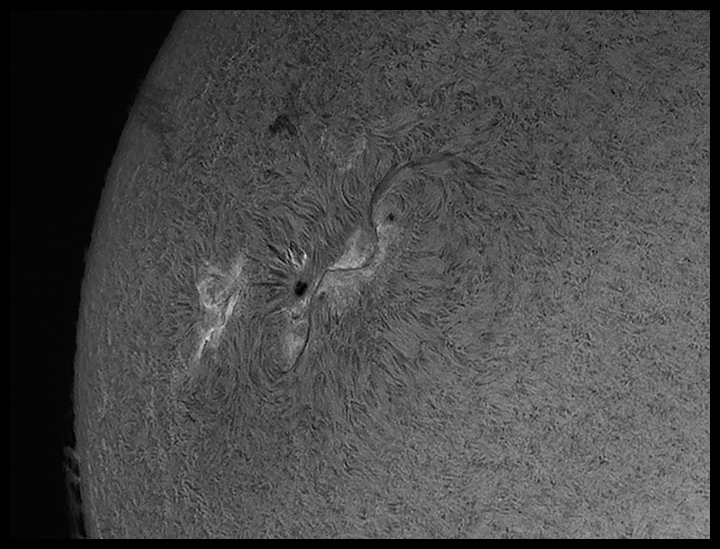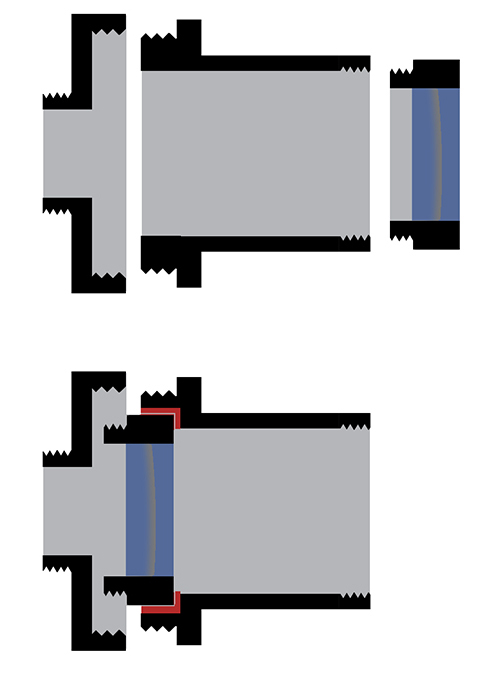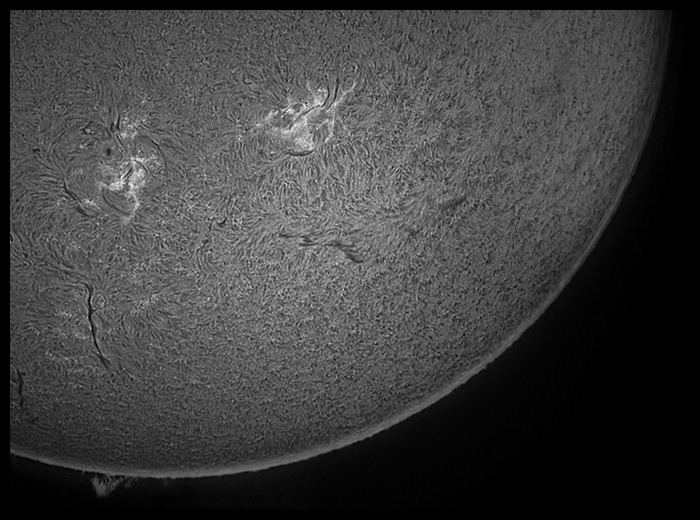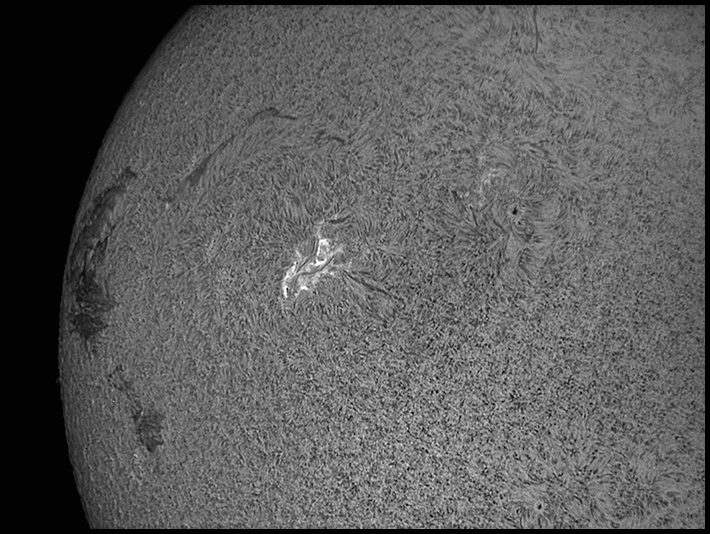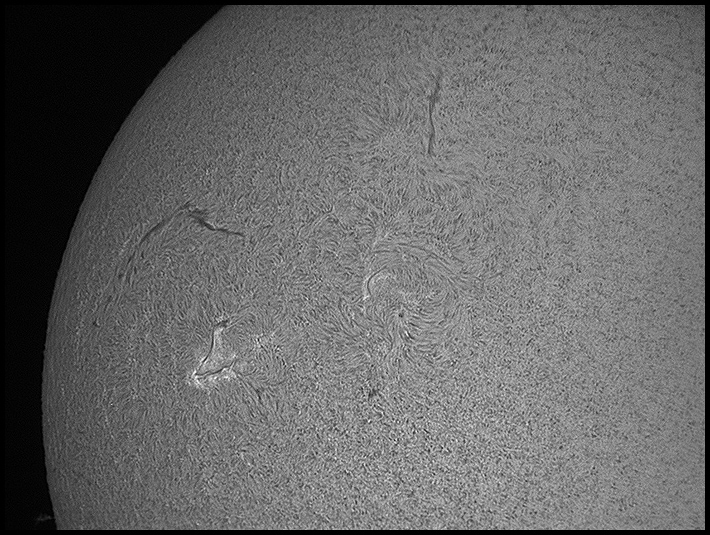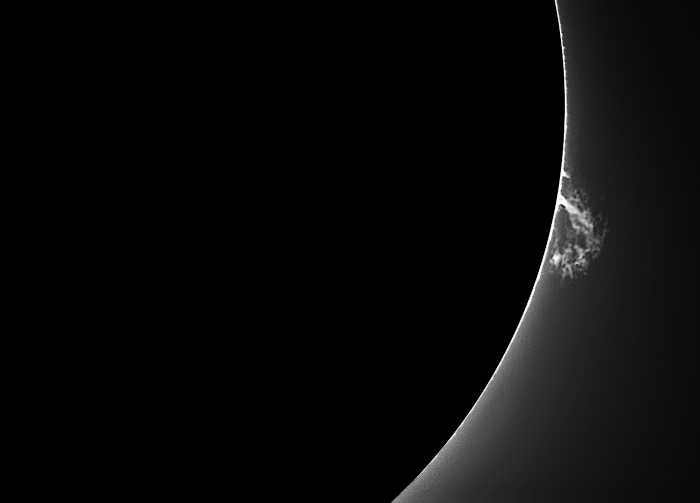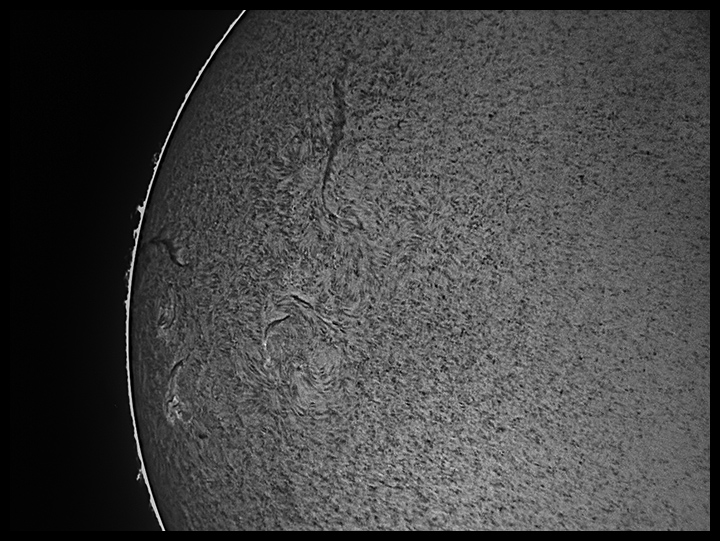|
A few minutes after capturing the clear third sequence of the day, I was startled to see that an immense dark streak had formed above the active region. A few minutes earlier, I'd been watching a small, forked spark just above the largest umbra in AR 1429. I grabbed a fourth sequence for comparison. Here are two photos refined from 300 frame captures made about 40 minutes apart. I think the differences are striking, but for all I know the changes may be elusive for visitors without some practice staring at the Sun, so I've marked the major changes with arrows in the third image below.
AR1429 being quiet (low C, high B flaring)
I wish I understood better what's been captured here. It looks like that minor flare in the first frame has launched a sizeable jet of plasma from the Sun. Maybe it's "only" accelerated some along the field lines and blue- or red-shifted it so that the 0.55A filter renders it opaque. Whatever the case, we're looking at gas being shot about at remarkable speeds by magnetic forces not far above the surface of a star where gravity is 27 times more poweful than Earth's.
3/13/2012. I wanted to move the Barlow much closer to the CCD and priced some custom adapters from Precise Parts. $89 - 100. I noticed that I had an extra 1.25-inch prime focus adapter, which is to say that a 1.25" snout was available for experiments. I dwelt on it. And in the shower last night, the solution came to me (as it does so often in the shower, actually). Normally, the cell from an Orion Shorty Barlow threads onto the end of the 1.25-inch diameter snout, where it produces a large and often excessive effective focal length. If I could machine out space inside the other end of the adapter so the Barlow's cell could be inserted a few mm, then the Barlow could be sandwiched between the C-to-T-adapter ring the same way the Antares 0.5x compressor is held between them (the compressor's cell is thin enough to fit without my having to carve out any extra space). Voila! I spent five minutes on the lathe cutting a shallow "cove" into which the sky end of the Barlow fits. The cut out is deep enough that the Barlow allows the C-to-T-ring adapter's threads to get a secure grip on the snout and that holds the sandwich together. Enough words! Just look at these slightly exploded drawings to see how things fit:
Cross-section. Parts named from left to right.
3/15/2012. A few minutes before lightning forced me to unplug the electronics and rain forced me to cover the glass and aluminum, I had time to try out the new adapter. The images above display a solar diameter of about 3000 pixels; in the one below, with the modified adapter and internal Barlow, the Sun is 50% smaller. The Sun's disk is about 2000 pixels in diameter. Note that I've put the small C-CS adapter in place (mostly so I don't lose it).
300x8ms through thin clouds
A 3000 pixel diameter image of a 32 arc minute subject implies a plate scale of 0.64"/pixel while the 2000 pixel image implies 0.96"/pixel. The aperture of the double-stacked Lunt THA60 is only 50mm, so the Dawe's limit would be in the vicinity of 2.3 seconds of arc. Make of it what you will. Oversampling to some degree works. When and how much, now, those are interesting questions. Point being: for every day I can use a 0.64"/pixel image scale, there are probably three when I can use 0.96"/pixel. I can do an all-disk image just about any time I can see the Sun, nothing challenging there, but pulling fine detail from a small objective requires some cooperation from the air.
3/16/2012. Another glimpse just past the meridian pines as clouds moved in showed a large filament near the limb and a C-class solar flare in progress:
300 x 8ms, internal Barlow adapter
A few minutes later, a look through a second gap in the treetops showed that the flare had subsided and that the filament might be rising into space. More trees and thickening clouds kept me from watching to see if this was the case and if it might emerge as a bright prominence above the limb.
3/17/2012. One day later.
3/19/2011:
Surface detail: 6ms x 300
Limb detail gets 2x the amplifier boost and 10x the exposure time -- 20x the net exposure. All in all, the air was steady but the sky slightly hazy. I just aimed the telescope at the Sun in the morning (with the A-P mount set to a 4 hour meridian delay) and let it track through the pines and into occasional clear sky. The netbook screen is reproduced via WiFi on my second monitor. When the treetops and the clouds allowed, I looked around and grapped a clip or two.
|
:: top ::
© 2011, David Cortner
